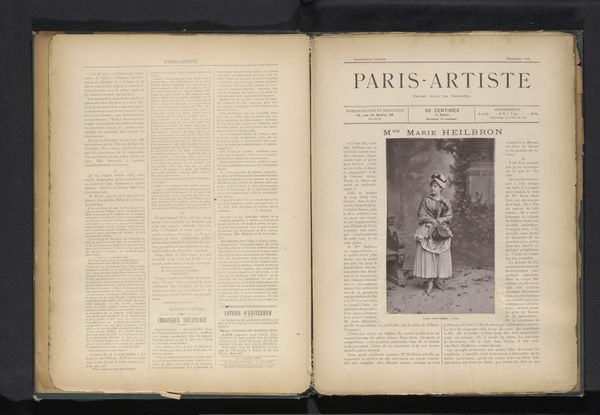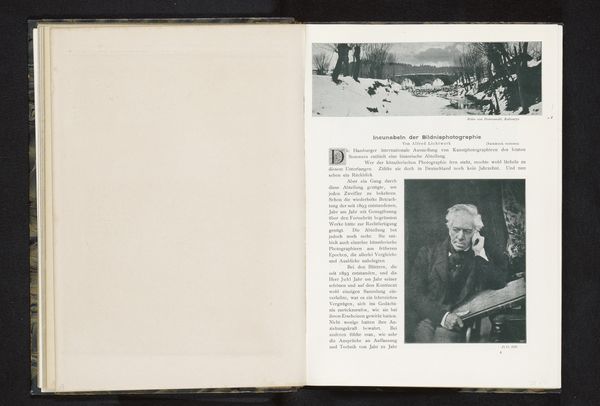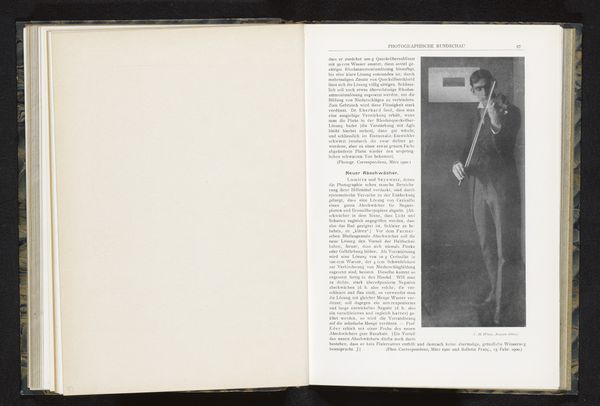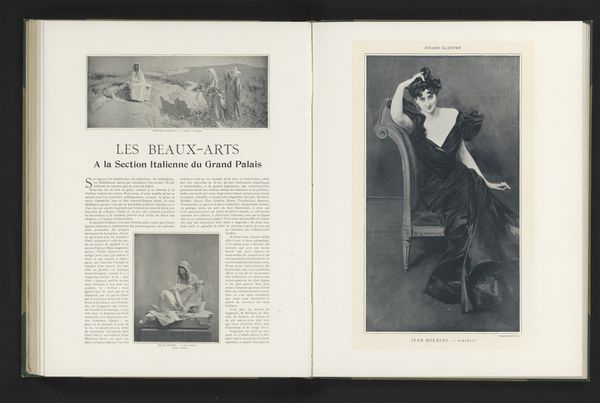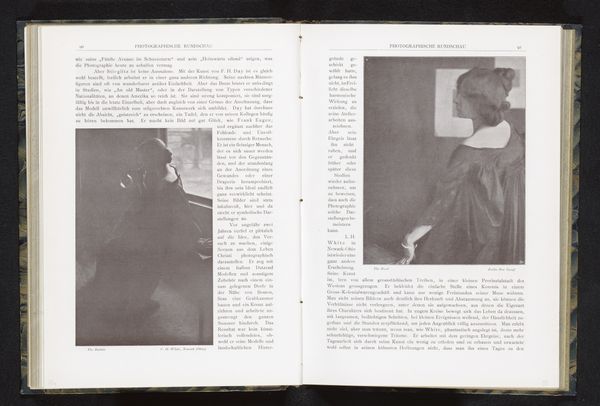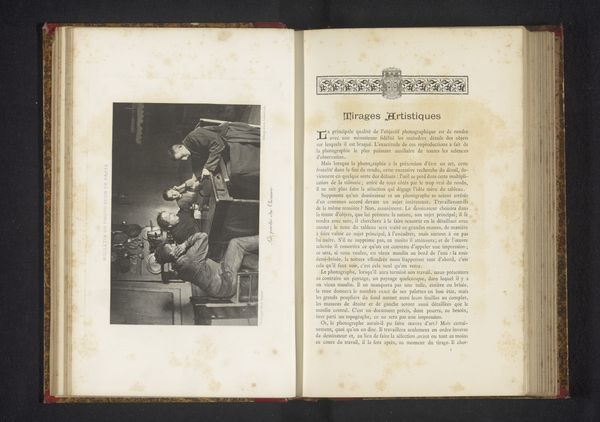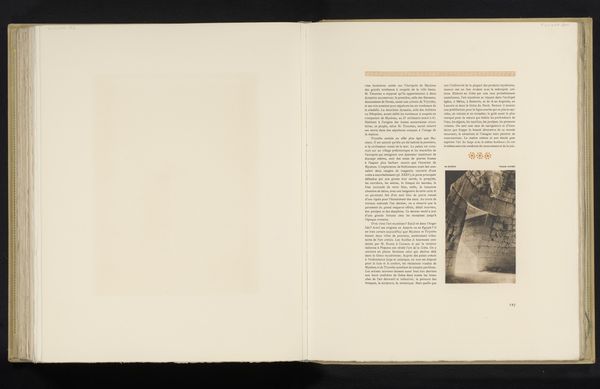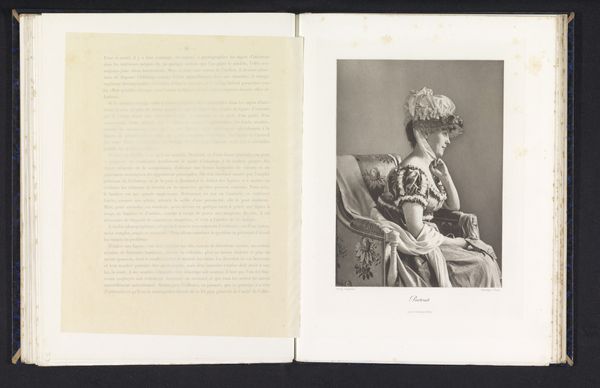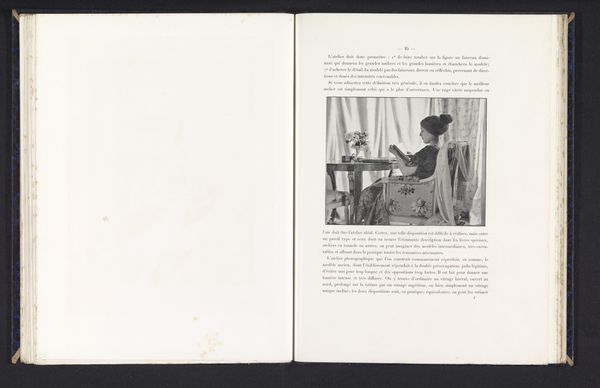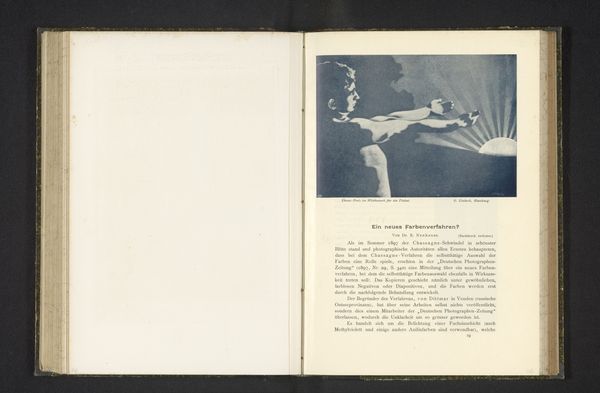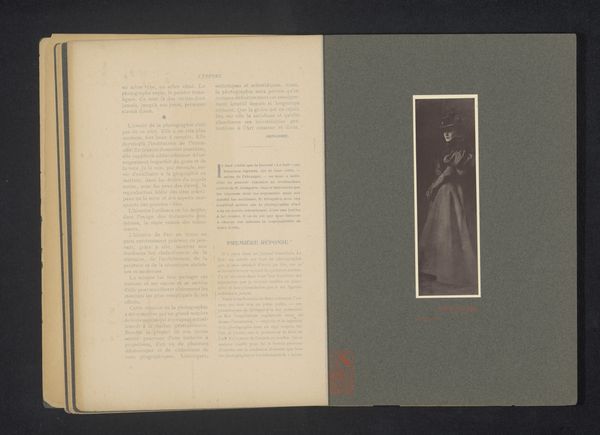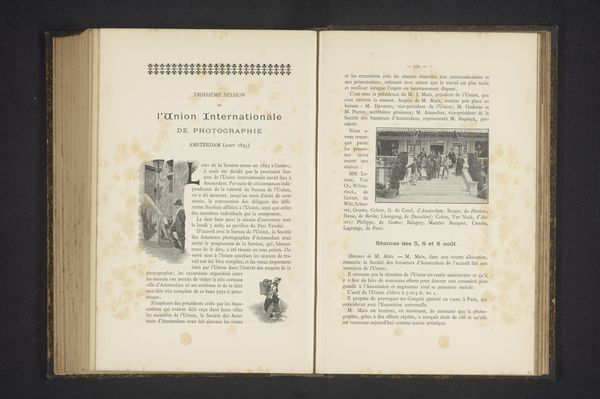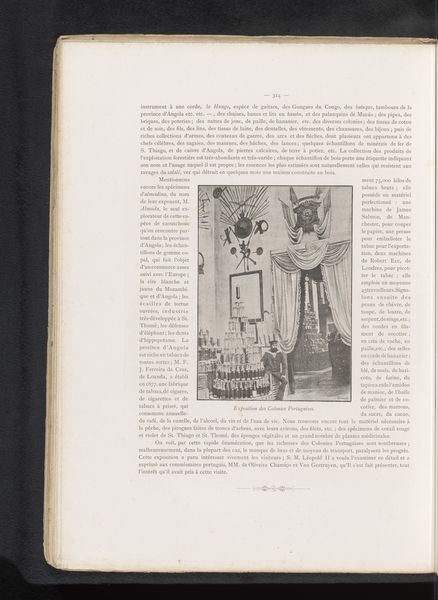
print, photography
#
portrait
#
art-nouveau
# print
#
photography
Dimensions: height 191 mm, width 121 mm
Copyright: Rijks Museum: Open Domain
Curator: We're looking at an open book of photography dating from before 1883. It’s titled “Portret van Louise Théo" and it's attributed to Wilhelm Benque. The format suggests it’s part of a larger publication or series, likely showcased within a periodical. Editor: The composition strikes me as performative. Look at the staging. The photograph feels like a character study; this woman’s gaze seems intentionally seductive or at least coquettish. What can you tell me about the medium of photographic printing? Curator: What grabs me is how photography, by this point, became a means of disseminating images broadly. This was a reproduced portrait included in a paper called “Paris-Artiste”. There is something to be said for that periodical sharing a page with adverts for new sewing machines and headache cures. What did mass reproducibility mean for portraiture and concepts of celebrity at that time? The placement of Louise Théo’s portrait beside adverts for sewing machines or face cream invites analysis on mass media's role in reinforcing and marketing female stereotypes, even normalizing capitalist desire. Editor: And in turn what symbolic charge can these reproducible images take? Note the presence of flowers adorning Louise's hat. Those may allude to classical ideals of feminine beauty and spring time. Her placement front and centre suggests to me the way these symbols have historically created notions of female value for male audiences. What do you think? Curator: I find it intriguing how it blurred the boundaries between artistic expression and commodity culture. Also note the very distinct "Art-Nouveau" lettering—something quite novel, even cutting edge at the time for mainstream audiences. The photographic medium offered its own unique qualities—mass reproduction, texture of ink, paper. Editor: I see. The way it's printed next to text also calls our attention to what narrative and visual structures underpin such publications—how Louise becomes a cultural signifier to read alongside commercial signifiers of that era. Curator: Ultimately it is the social function of reproducibility through this format that catches my attention. It’s fascinating. Editor: Indeed—mass reproducibility allows images and cultural values to become entwined on a mass level. Something that still resonates today.
Comments
No comments
Be the first to comment and join the conversation on the ultimate creative platform.
